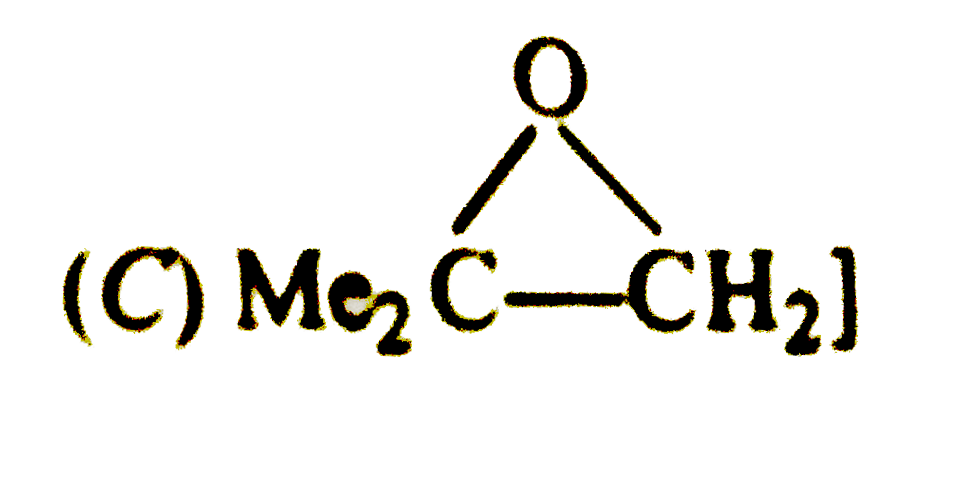Identify Z in the series
CH3CH2CH2OHconc.H2SO4−−−−−−−→160−180∘C(X)Br2−−→(Y)alc,KOH/Δ−−−−−−−−→NaNH2/Δ(Z)
CH3−CH∣OH−CH2∣OH
CH3CH2CH(OH)2
CH3−C∣OH=CH2
CH3−C=CH
The correct Answer is:4
To identify the compound Z in the given reaction series, we will analyze each step of the transformation starting from propanol (CH₃CH₂CH₂OH).
Step 1: Dehydration of Propanol
The first step involves heating propanol (CH₃CH₂CH₂OH) with concentrated sulfuric acid (H₂SO₄) at 160-180°C. This process leads to dehydration, where a water molecule is removed, resulting in the formation of an alkene.
Product after Step 1:
- The dehydration of propanol yields propene (CH₃CH=CH₂).
Step 2: Electrophilic Addition with Br₂
Next, the alkene (propene) is treated with bromine (Br₂). This reaction is an electrophilic addition reaction, where bromine adds across the double bond.
Product after Step 2:
- The product of this reaction is 1,2-dibromopropane (CH₃CHBrCH₂Br).
Step 3: Dehydrohalogenation with Alcoholic KOH
The 1,2-dibromopropane is then treated with alcoholic potassium hydroxide (alc. KOH) under heating conditions. This step involves dehydrohalogenation, where hydrogen and bromine are removed, resulting in the formation of another alkene.
Product after Step 3:
- The product formed is 1-bromo-1-propene (CH₃C=CHBr).
Step 4: Reaction with NaNH₂
Finally, the compound (1-bromo-1-propene) is treated with sodium amide (NaNH₂), which is a strong base. This step leads to the elimination of the bromine atom and the formation of a triple bond.
Product after Step 4:
- The final product is propyne (CH≡C-CH₃).
Final Answer
Thus, the compound Z in the series is propyne (CH≡C-CH₃).
---
The first step involves heating propanol (CH₃CH₂CH₂OH) with concentrated sulfuric acid (H₂SO₄) at 160-180°C. This process leads to dehydration, where a water molecule is removed, resulting in the formation of an alkene.
- The dehydration of propanol yields propene (CH₃CH=CH₂).
Next, the alkene (propene) is treated with bromine (Br₂). This reaction is an electrophilic addition reaction, where bromine adds across the double bond.
- The product of this reaction is 1,2-dibromopropane (CH₃CHBrCH₂Br).
The 1,2-dibromopropane is then treated with alcoholic potassium hydroxide (alc. KOH) under heating conditions. This step involves dehydrohalogenation, where hydrogen and bromine are removed, resulting in the formation of another alkene.
- The product formed is 1-bromo-1-propene (CH₃C=CHBr).
Finally, the compound (1-bromo-1-propene) is treated with sodium amide (NaNH₂), which is a strong base. This step leads to the elimination of the bromine atom and the formation of a triple bond.
- The final product is propyne (CH≡C-CH₃).
Thus, the compound Z in the series is propyne (CH≡C-CH₃).
Topper's Solved these Questions
- HYDROCARBONBOOK - RESONANCE ENGLISHCHAPTER - HYDROCARBONEXERCISE - INORGANIC CHEMISTRY (COORDINATION COMPOUNDS)
7 Videos
- GASEOUS STATEBOOK - RESONANCE ENGLISHCHAPTER - GASEOUS STATEEXERCISE - Exercise-3
1 Videos
- IONIC EQUILIBRIUMBOOK - RESONANCE ENGLISHCHAPTER - IONIC EQUILIBRIUMEXERCISE - partIII one or more than one options correct type
10 Videos
Similar Questions
Knowledge Check
Supply structural formulae for missing compounds.
(i) H2C=CH2+(A)→ClCH2−CH2OHH2SO4−−−−−−→413K(B)alc. KOH−−−−−−−→Δ(C)
(ii) CH3CHBrCH3alc. KOH−−−−→(A)HBr−−−−−→Peroxide(B)CH3ONa−−−−−→(C)
(iii) Me3CBralc. KOH−−−−→(A)HOCl−−−→(B)NaOH−−−→(C)
 AABCCH3CH=CH2CH3CH(Br)CH2BrCH3CH(OH)CH3BABCCH3CH=CH2CH3CH2CH2BrCH3CH2OCH2CH2CABCCH2CH=CH3CH3CH(Br)CH3CH3CH2OCH2CH2DABCCH2CH=CH3CH3CH2CH2BrCH2CH2CH2OCH3
AABCCH3CH=CH2CH3CH(Br)CH2BrCH3CH(OH)CH3BABCCH3CH=CH2CH3CH2CH2BrCH3CH2OCH2CH2CABCCH2CH=CH3CH3CH(Br)CH3CH3CH2OCH2CH2DABCCH2CH=CH3CH3CH2CH2BrCH2CH2CH2OCH3Identify (Z) in the following reaction series,
C2H5IAlcoholic−−−−→KOH(X)Br2−−→(Y)KCN−−→(Z)ACH3−CH2−CNBC∣CNH2−C∣CNH2CC∣BrH2−C∣CNH2DC∣BrH=CH∣CN
Identify 'Z' in the following reaction series,
CH3CH2CH2BrNaOH(aq)−−−−−−→(X)Al2O3−−−→heat
(Y)Cl2/H2O−−−−−→(Z)
View SolutionIdentify Z in the following series
CH2=CH2HBr−−→XHydrolysis−−−−−−→YNa2CO3−−−−→I2excessZ
View SolutionIdentify X,Y and Z in the following synsthetic scheme and write their structures
CH3CH2C=CH(i)NaNH2−−−−−−−−−→(ii)CH3CH2BrX
XH2/pd−BaSO4−−−−−−−−−→Yalkaline−−−−→KMnO4Z
View SolutionCH3CH2CHCl2Aq.KOH−−−−−→?
View SolutionCH3CH=CH2NBS−−→AKCN−−→BOH−/Δ−−−−−→CP/Br2−−−→DNH3−−→EΔ−−→F
View SolutionCH3−CH3∣CH−NO2NaNO2+H2SO4−−−−−−−−−−−−→at0∘C(A). (A) is:
View Solution
